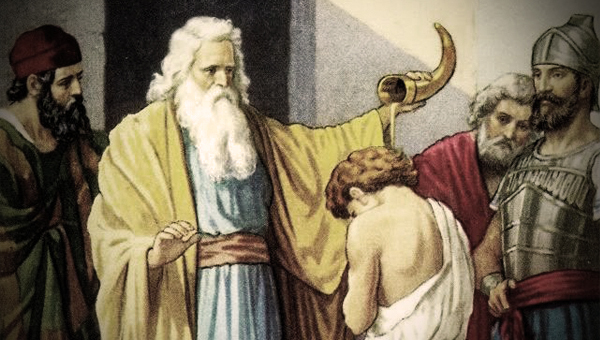
Men of the Scripture: Samuel
 His name means “The Name of God.”
His name means “The Name of God.”
Samuel had realized God’s protection out of obedience. He had led the people through a time of repentance and intercession that restored their relationship with God; called forth His protective care (1 Samuel 7:10).
His work: Samuel was a priest, prophet and judge. He helped transform Israel from a nation led by charismatic figures called “judges” ruled by kings, who were exercising their authority not as other kings were doing, but as men who belonged to God. Samuel had anointed Israel’s first kings: Saul and David.
His character: Samuel was eager to hear God’s voice and was willing to speak His word, even when doing so means rebuking a king and risking his life. He was considered a spiritual leader who won military victories against the Philistines.
He reminded the people about God’s faithfulness. Yet, sadly, he failed to pass on these traits to his sons.
His Sorrow: Saul, Israel’s first king disobeyed God.
His Triumph: It was his significant triumph to help shape Israel into a monarchy whose kings were to be God’s servants. Samuel had initiated Israel’s deliverance by helping the people face the root cause of their lack of might—their continued disobedience and idolatry.
Promises:
“From the Lord comes deliverance.” – Psalm 3:8
“In repentance and rest is your salvation.” – Isaiah 30:15
“There will be more rejoicing in heaven over one sinner who repents than over ninety-nine righteous persons who do not need to repent.” – Proverbs 20:7
Legacy in the Bible: 1 Samuel 3:1-21; 1 Samuel 7:1-10
Reflection:
It is an interesting fact that when the ark of the Lord was captured by the Philistines, the Israelites felt as though God had departed from the midst of his people.
And this pattern for the ark had originally been revealed to Moses on Mount Sinai. It was made of acacia wood, and a rectangular box, 3 ¾ feet long and 2 ¼ feet wide and high. Gold plated inside and out, it had rings at its four corners into which carrying poles were permanently inserted. A lid of gold was placed over the ark and two winged cherubim made out of gold were positioned at opposite ends of the lid facing each other. This golden cover became known as “the mercy seat.”
Inside the ark were the stone tablets containing the Ten Commandments, a gold jar with manna in it and Aaron’s rod—memorials of God’s covenant and saving power. (Feedback to 09106793441) (Edgardo R. Sara | Kiblawan)


No Comments